In light of the coming Roleplay revamps to Helion…
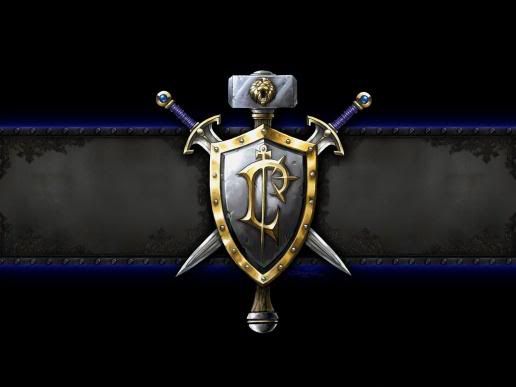
Introduction: The Humans of Stormwind are a resilient breed, having survived an invasion by the savage Orcs during the First War. During the Second War, the armies of Stormwind rallied with the Alliance to reclaim their homeland of Azeroth. After the success of the Second War, Stormwind was rebuilt and Human civilization began to flourish once again throughout the southlands. With the recent invasion of the Burning Legion – which left the northern kingdom of Lordaeron in ruins – Stormwind now stands as the last bastion of human civilization. Following the heroic examples of the legendary Sir Lothar and King Llane, the defenders of Stormwind are considered to be among the fiercest warriors in the land. They stand resolute in their charge to maintain the honor and might of humanity in an ever-darkening world.
Human Information
Affilation: Alliance
http://www.wowwiki.com/Alliance
Additional Intro: Humans are a young race, and thus highly versatile, mastering the arts of combat, craftsmanship and magic with stunning efficiency. The Humans’ valor and optimism have led them to build some of the world’s greatest kingdoms. In this troubled era, after generations of conflict, humanity seeks to rekindle it’s former glory and forge a shining new future.
Leader: King Varian Wrynn (still missing as of
Burning Crusade) Highlord Bolvar Fordragon acting as protector to young
King Anduin Wrynn
http://www.wowwiki.com/Varian_Wrynn
http://www.wowwiki.com/Bolvar_Fordragon
http://www.wowwiki.com/Anduin_Wrynn
Capitol: Stormwind
http://www.wowwiki.com/Stormwind_City
Main Language: Common
http://www.wowwiki.com/Common_(language)
IC RP "Speak”: "English”, from crude to proper - – some Scottish/Irish, accents may vary.
Main Faith/Philosophy:
The Holy Light (philosophy)
http://www.wowwiki.com/Light
Allies: Dwarves, Night Elves, Draenei, Gnomes
Racial Enemy: Scourge (Forsaken are sometimes lumped into that list), Burning Legion (Also shaky truce – enemies with Horde forces)
Basic Height, Weight & Age:
Male Height: 5′-6′8″
Female Height: 4′7″-6′3″
Male Weight: 124-280 lb.
Female Weight: 89-245 lb.
Adulthood: 20 years.
Middle Age: 35 years.
Old: 53 years.
Venerable: 70 years.
Life Expectancy: 72-90 (~110?) years.
OOC Culture Reference: A mix of European with a dash of North American culture.
I know, you're thinking "wait a minute, I'm already a human, aren't I? Isn't roleplaying a human in WoW just like being a human in real life -- plus some sword and sorcery, minus some boring office jobs and unpleasant bodily functions?" The answer is no, it's not so simple -- there's a bit of history and culture at work in Azerothian human society that all roleplayers of human characters need to be aware of. Otherwise, it's easy to fall into the trap of inconsistency with the Warcraft lore and the roleplaying that everyone else is trying to do within it.
Suppose for example that you say "Hi! My name is Walter and I was raised on a farm. Now I've come to Stormwind to have adventures and become a hero!" You may find the never-seen-danger-before style of new hero interesting to roleplay, but it would be very unlikely to find such a human in the actual Warcraft lore: ever since the orcs first came through the portal 30 years or so prior to the setting of our game, every human nation has suffered terribly as the human race barely survived 3 huge waves of devastating warfare, with some whole nations of humans completely wiped out. No human growing up in that time would have been untouched by the conflict -- and if you want to roleplay a human, you ought to know about it.
Similar issues exist for all the available player races in WoW; there are certain details about your race's history that you need to know in order to roleplay well. So today we will provide you with the basic knowledge you need to be a human. We'll leave the in-depth lore to other columns, though -- today is just a basic roleplayer's primer on one race, with other races to follow in the future.
In the beginning...
If the character you have in mind is like a human of the historical European dark ages, you're probably not too far off the mark, since those were times of deep hardship, bloody warfare and prevailing disease for that particular portion of humanity on Earth, and much of the culture from that time has been borrowed in the creation of humans in Warcraft: big cathedrals built by menial peasants, feudal civilization ruled by privileged nobles, and an order of religious warriors that guides and protects the common people.
A major difference between any Earth humans and those of Azeroth, however, is that humans on Azeroth have always been surrounded by strange and magical creatures with whom they must cooperate or compete for survival. The history of humans begins 3000 years ago with their teaming up with the high elves in wars against the trolls, and learning from the elves the arts of magic and civilization. Their interaction with the long-lived elves must have led them to feel inferior, both in terms of their lifespan and their knowledge, while their warfare with the trolls led them to feel intense hatred for savageness and monstrosity, as well as the need to dominate the world around them. Both of these bred wild ambition in human beings, who spent their relatively short lives in both inquisitive and aggressive pursuits: learning about magic and building great empires.
This thirst for dominance caused them to be the center of power in Azeroth when the orcs were first summoned through the dark portal. This was was the beginning of the First War, and its consquences were so shocking for the humans that it came to be known as the pivotal moment that began the "Age of Chaos." The orcs rampaged through Stormwind and the regions around it, and within the space of 4 years, destroyed the city and forced the human refugees to flee across the sea to the north, to Lordaeron.
The end of the world, almost
During the Second War, the orcs pushed north to try and conquer Lordaeron as well, but the humans allied with the high elves and the dwarves to form the Alliance and drive the orcs back all the way to the Dark Portal, retaking Stormwind in the process. For almost 20 years it seemed that the worst disaster had been averted as humans stood triumphant with their new allies, and the remaining orcs were mostly relegated to concentration camps.
If your human character is now over 25 years old, he or she may have witnessed all these events as a child or young adult, and may carry an abiding fear of and hatred for the orcs who very nearly destroyed humanity. For a character around 20 years or less, however, this would have all taken place just before he or she was born and may have grown up with a more expansive sense of pride in her people, in the Alliance, and in their proven ability to dominate over the pitiful orcs and any other threat that stood in their way.
Any human character we might play, however, would have lived through the events beginning 5 years prior to the beginning of World of Warcraft, played out in Warcraft 3, and called "the Third War" according to the in-game lore. The undead came to power in the northern regions of Lordaeron and totally wiped out most of the humans and elves there. Those who survived or escaped that war were severely traumatized.
Undead and Demons and Orcs, oh my!
 The
undead summoned Archimonde and many demons of the Burning Legion at
Dalaran, not far from Lordaeron city, but after that, most of the Third
War took place across the sea to the west in Kalimdor. A human soldier
or mage who took part in that war might have gone across the sea under
the leadership of Jaina Proudmoore,
met the night elves, and possibly even fought the Burning Legion on
Mount Hyjal alongside the orcs, and witnessed the destruction of the
night elves' world tree that ended the war. A human who stayed behind in
the Eastern Kingdoms, however, would have only heard about the events
in Kalimdor from other people -- and who knows how much of what they
heard would be accurate, or how much they would choose to believe.
The
undead summoned Archimonde and many demons of the Burning Legion at
Dalaran, not far from Lordaeron city, but after that, most of the Third
War took place across the sea to the west in Kalimdor. A human soldier
or mage who took part in that war might have gone across the sea under
the leadership of Jaina Proudmoore,
met the night elves, and possibly even fought the Burning Legion on
Mount Hyjal alongside the orcs, and witnessed the destruction of the
night elves' world tree that ended the war. A human who stayed behind in
the Eastern Kingdoms, however, would have only heard about the events
in Kalimdor from other people -- and who knows how much of what they
heard would be accurate, or how much they would choose to believe. A human who fought alongside the orcs might have a grudging respect for them, while one who remained behind might still think of them as evil, simple-minded savages. A human who grew up in Lordaeron would have remained relatively safe during the first and second wars, only to lose everything to the undead 20 years later. A young human growing up in Stormwind after the first and second wars might have been raised in an atmosphere of pride, hope, and reconstruction, only to see the world outside of Stormwind seem to collapse around them during the Third War as he or she came into adulthood.
You may choose for your character to come from anywhere in the Eastern Kingdoms, in the areas around Lordaeron and Stormwind (such as Arathi or Westfall) but be careful not to stray too far into areas where there were no human settlements (such as Stranglethorn Vale), and do a bit of extra reading about your character's chosen hometown. Whatever you do, don't claim that your character was born and raised in Kalimdor -- humans didn't even know that Kalimdor existed until a few years ago, and modern human settlements there, such as Theramore, were only founded recently.
For further reading about the history of humans and the fate of their various kingdoms (of which Stormwind is the last remaining stronghold), have a look at the WoWWiki page on humans, as well as the Dramatis-Personae page on creating a human character. You might also find the Blizzplanet Warcraft Timeline useful as a reference.
Human Views
The Alliance
Draenei: The humans and the draenei have probably had one of the most staggeringly swift positive receptions in history – The draenei’s reputations for honesty and forthrightness have preceded them. While humans don’t tend to see divergent cultures as a bad thing, the shared religious culture between the two societies likewise probably shores up the relationship a bit too; although it may also be the one tearing point between the two races. Religion is, of course,a very powerful and personal thing that people have a lot of trouble giving way on. And the draenei’s version of the Holy Light, while similar, is not quite the same as that of the humans. I’ve compared it to the differences between Protestants and Catholics before, and I think the comparisons hold (even if the details mix a little). Draenei probably see their faith as much more personal, iconic and immediate; humans see it as more institutional, abstracted and distant. Still, the two races work well together: Humans still see the draenei as honest above all else, and this endears them greatly to the human race.
Listen to me, boys. Don’t be afraid of the blue boys. I’ve fought with ‘em before and they’ll look out for you as much as each other. I’ve fought with ‘em, prayed with ‘em, talked with ‘em. I wouldn’t eat their weird cooking, but otherwise they’re brothers in arms.
Dwarves: What’s to discuss? (Answer: The question of religion, see below.) The dwarves and the humans forged allegiances in the leadup to the Second War and have since been the closest allies of the human race; fighting side by side in every major conflict since. In addition to this, the cultural interaction between the two races has been enormous; there’s a whole dwarvish section in Stormwind, and there’s no question of the loyalty between the two races. Their religion has been shared, their culture has been shared, and it’s not a coincidence that the most connected two cities in the game (well, on the Alliance side) are Stormwind and Ironforge. Unlike most of the allegiances, the dwarvish people have something unique to the humans: Their friendship. More humans than not are going to see a dwarf as nothing more than a human with small legs and arms. (This, of course, is a false belief, but it’s a mostly harmless one.)
However, there is a fly in the ointment: The Mysteries of the Earthen. It’s no secret that the Mystics (which I now propose should be their shortened name) are a growing movement within the dwarven kind. And this is why I downgraded my previous sentence from saying, "Most humans see dwarves…” to "more humans than not are going to see dwarves…”; the fact is that there is probably a whisper campaign amongst humans now wondering how loyal the dwarves really are.
It’s nothing more than rumor at this stage yet. Few humans give it much credence. But loyalty means a lot to the humans. And if the rumors continue, the idea of a dwarvish separation may well become a self-fulfilling propechy.
So we’re in Menethil, waiting for our posting orders to come in and board a boat off to wherever it was we were meant to fight – Turned out it was the plaguelands, but anyway – This local yob starts ragging on Kraz, calling him a rock-sucker and all that. We’re all getting up to stand up for him, but he just steps forward and headbutts the guy, straight ahead. Yep, exactly there. And he still wears the helmet with all the spikes on it. I swear, we were laughin’ the whole boat ride, couldn’t stop.
Gnomes: And then we have the gnomes, whose relationship with the humans is a case study in how humanities conception of loyalty works. Do the humans trust a gnomish invention? Never. Ever ever. For god’s sakes, they want to combine drills and forks into a single unholy combination that drills and forks all at once. (Mostly forks.) Their inventions seldom make any sense, and humans just can’t see the need for them. They’d honestly be happier if gnomes were all just happy to keep pouring out the clever military inventions that they joined the Alliance to provide. But come hell or high water, the humans are going to defend the gnomes if the gnomes ever need it. Because the gnomes have been doggedly loyal (and I think most humans understand why the gnomes didn’t leap to their aid in the Third War now; it’s hard to miss mass dispossession) and humans repay loyalty, damn it all.
I don’t know. Look, it’s not that I don’t trust your inventions. Honestly, I do. And sure, I absolutely agree that flanking the orcs would give us an unparalleled advantage in the battle. I just think that when it comes to being hurled from a gunpowder-driven, spring-loaded catapult, um… ah… you’d do better to use someone a bit lighter on his feet, is all. Y’know, Hamsig would be perfect for it, why not ask him?
Night Elves: The night elves are mostly trusted by humanity. Really. It’s been two years now since they joined the Alliance and they’ve been absolutely faithful, and this is the kind of thing humans notice. Their joint efforts have all been successful, and there’s no reason to distrust them, except that…
They’re so reserved.
Humans encourage difference. They love it. But they love it because it creates clashes, and arguments. Because humans really believe that difference creates progress. And that just can’t happen if the night elves insist on keeping to themselves whenever possible, smiling politely at suggestions they disagree with and otherwise avoiding conflict.
Most humans feel that the kal’dorei seem prepared to live in their own little world, part of the Alliance but not part of it. As such, they trust the night elves.
Of course they do.
No more of that! I hear one more loose remark about the kal’dorei in this unit and you’ll be peeling potatoes for weeks, you hear me! They’re the finest archers in the army, and they’ll have our backs. Dismissed! Captain Hunearce, stay back please. … Captain, keep an eye on the long-ears, alright? Make sure they’ve got our backs.
The Horde
Blood Elves: Which race is it that the humans will have the most antipathy for? It’s not the orcs, despite three bitter long wars. It’s not the forsaken, despite the undead destroying Lordaeron. Nope, for most humans, it’s going to be the Sin’dorei. The orcs may be a hated and feared race, but to most humans they’re nothing but brutal monstrosities. The forsaken are the same, only tinged with bitter regret over Lordaeron’s passing. But the blood elves were once allies of the humans, before they went and allied with the demons. Is that statement true? Of course not. But do a large percentage of humans believe it? Probably. There’s simply no rumour so nasty that a sizable number of humans won’t believe the blood elves aren’t capable of it. The humans knew the blood elves, or so they thought. Now, they don’t. That’s a harsh reality to face.
Take them out, men! Take them all out! Let none of their number survive! Show them what the Alliance does to traitors.
Orcs & Trolls: The humans don’t distinguish between these two races a whole lot, mostly because ever since they’ve been fighting them both since the second war. (Granted, the Darkspear Tribe aren’t the trolls they were fighting in the second war, but how many humans do you think know the difference anyway?) As such, the opinions of both races are roughly the same: They see the orcs and trolls as frightening, horrible monsters who murder and butcher anyone they come across and for some insane reason, the humans currently have a shaky ceasefire with them. Is it any wonder there are agitators in Theramore, and that the Stormpikes are well regarded?
Those soldiers who fought in Kalimdor during the third war are probably a bit more reasoned in their beliefs, although they still don’t distinguish much between the two. They see the orcs and trolls as savage but reasonable foes, and that ceasefires and treaties with them (temporary ones, at least) are reasonable to consider. For these humans, the Scourge and Burning Legion are greater worries.
Hold, hold! We have word of Scourge to the South. Wait until our messenger returns with word from their commanders. We may be holding the line against these monsters. I said HOLD! Anyone who fires one shot will be court martialled!
Tauren: The humans have about as much experience as the dwarves in fighting the tauren, and much like them, there’s probably not a huge amount of vitriol directed their way. In fact, the humans probably even have fewer issues than the dwarves about the tauren; humans are big on diplomacy and the tauren’s calm approach to conflict means that diplomatic outreach would certainly be plausible. In fact, many humans probably wonder if Cairne Bloodhoof might be the best choice to approach if peace becomes a realistic proposition on Azeroth. (These people are wrong, but it’s a sensible mistake to make.) When on the battlefield, humans respect tauren for their size, speed and capacity to surprise. But they’re targeted for those reasons, not ancient racial grudges.
Marksmen! Target the big ones first, you lot! If they reach our front line they’ll make mincemeat of it. I want to see those bulls turned into porcupines before they reach us! For Light’s sake, they’re hard targets to miss! Hit them! HIT THEM!
Undead (Forsaken): Bitter anger, rage and horror, mixed with terrible sadness. The human race saw one of its finest kingdoms completely destroyed by the Scourge, and it’s a wound that is still fresh and painful. All humans know just how close they came to absolute obliteration in the face of the undead. Fighting one is a horrifying proposition viscerally and emotionally; you know you’re tearing apart something that was a human being, but now is a lump of berserk bone, flesh and pus. In the face of all this, it’s no wonder that very few humans distinguish between the two undead factions. (Yes, I know I’d previously said they probably did, but I’ve rethought it.) Even thought humans who intellectually know the difference probably can’t find the heart to do so emotionally. As such, the forsaken are the main reason the humans still consider the Horde evil, and they burn the Forsaken to the ground whenever they find them.
We are victorious! Take the bodies and pile them up around the bonfires. They’ve risen once, we don’t know if they will again. Surround their village and burn it. Leave not one building standing. Destroy everything.
Viewing the Classes
Death Knight: Traitors and turncoats, twice over. How dare
these men and women, who turned on humanity in their greatest moment of
crisis, now dare to try and rejoin them? Few humans will ever forgive
the Death Knights for their sins. In human cities, they will be feared
and detested, spat at, and run from.
Druid:
Humans probably see druids with a little bit of
amusement and awe. There’s no question that it’s flat out awe-inspiring
watching a night elf man suddenly drop to the ground as a cat, hurling
himself with feline grace at his opponents and tearing them limb from
limb. On the other hand, the humans probably find the entire religious
order a bit odd. Druids are secretive and try not to discuss those
secrets with outsiders; humans generally like to talk. (Probably a
little too much.) They think druids are amazing, but a bit full of
themselves.
Hunter
: Humans admire hunters
of all races. It’s a difficult art, requiring an attachment with the
land in one way or another that few humans have, and they’d dearly love
to have the knack because, well, because humans want to have the knack
of doing everything. But humans are, perhaps even more than
dwarves, a race who bends nature to their will, not exists within its
flow. It’s just not a class they have the mindset for. For now, they’re
glad that they have both dwarvish and night elven sharpshooters within the Alliance.
Mage:
Ever since they learned the arcane arts from the
high elves, the humans have been deeply enamoured of magic; they see it
as a greater and more elegant solution to problem solving that most
things. They see magic as graceful and beautiful. However, unlike the
high elves, they don’t have a natural bent for it. Good mages
are hard to come by among the humans, and as such it’s seen as a very
academic and qualified discipline. There are probably a few mothers
among the humans who hope their children grow up to be sorcerers. (Or if
that becomes clearly an impossibility, to at least marry one.)
Paladin:
But no class has the humans respect quite like
the paladins. The Silver Hand is a near legendary organisation within
Stormwind, an order whose story has outpaced truth itself. Most human
children look at paladins with starry eyes and wonder, imagining them
holding off entire orc, undead or demonic armies all by themselves.
After all, the Silver Hand is credited with winning the Second War
single-handedly. (Again, not true, but the timing was fortuitous.) And
Stormwind, a city sacked and occupied by orcs within the First War, is
more likely to venerate the paladins than any other. I don’t think any
paladin ever pays for a meal in Stormwind.
Priest:
Priests are likewise highly respected within
the very religious Stormwind, but the relationship is very different.
After all, you don’t often talk to a paladin. Their talents are
on the battlefield, not within a city. Unless you’re an adventurer
yourself, you’re more likely to be talking with the priests. As such,
priests are seen as more relatable and personal than paladins, less
avatars of the Holy Light and more guides to its path. That same mother
who hoped her son would become a mage would probably be delighted to
learn he’d become a priest, but might wonder if he could handle the
pressure of it. Stormwind expects much of its priests, and priests who
don’t measure up probably don’t get a lot of sympathy.
Rogue: Now, this time, we
need to talk about rogues in a much deeper way. Enough so that if I have
time, I may do a whole post devoted to them. But humans fear
rogues in a way that the dwarves, gnomes and night elves truly don’t.
Those races see rogues as selfish, untrustworthy and (if they go … ahem…
rogue) a menace. But the humans see rogues as terrifying,
possibly even moreso than warlocks. Why? Because of SI:7. Humans know
damn well that they are being spied on, that Stormwind has a whole
network of spies whose job it is to make sure you’re not going anything
naughty… and that the definition of naughty changes daily. SI:7 is a
scary proposition, and humans know this. The odd thing is that if a
human rogue told his colleagues he was a thief and a bandit, they’d be relieved.
Shaman: Shamans probably
confuse the humans. Since it’s their primary point of similarity, most
humans see the draenei in terms of their devotion to the Light. But
shamanism inverts that, and has its own practices. Most humans
ultimately still trust a draenei, and don’t know enough about the orcs
to know shamanism as ‘an orc thing’. So they’re fine with it. But they
don’t understand it at all.
Warlock: A menace. Traitors, each and every one of them. The only question is whether or not an individual dwarf human sees all warlocks as irredeemably evil, or if they can make an exception for some of them. (Hey, why rewrite it when it works perfectly?)
Warrior: Humans probably have fewer warriors
than soldiers. While they’re a jack of all trades race, their society is
based strongly around group loyalties and such, and the Stormwind guard
is always hiring. That said, there are no doubt some schools of combat
training, and if a human wants to become a sword for hire, or even a
justice-seeking fighter, then there’s plenty of scope for him to do so.
The Kingdom of Azeroth (Stormwind)
The Kingdom of Lordaeron
The Nation of Kul Tiras
The Kingdom of Stromgarde
The Kingdom of Gilneas
The Kingdom of Alterac
The Nation of Dalaran
These may seem like a mere list of names to choose from but bare in mind, many of them have their own personalities.
Personality and Background
I’m a firm believer that there is room to allow individuals to break the mould of their culture and upbringing. There is still a basic personality behind most people in the separate Kingdoms; this has been referenced in Warcraft books such as The Last Guardian (Mostly in regards to the entire Lordaeron Region in comparison to the Kingdom of Azeroth) and Tides of Darkness (based on the Second War).
Before you jump into your background you have to understand the personality of Warcraft Humans. They are arrogant, xenophobic and unique much like us. They are however, unaffected by modern culture which we have succumbed to in a very bad way, often becoming decadent and lazy. So naturally on average they are hard working, they understand and have to respect authority (especially when confronted by a King, Lord or Military Officer) and they are not as forgiving as we are. There is no reporting "police brutality” or any rubbish like that. They maintain their Kingdoms with an iron fist and criminals fear the law on an appropriate level. So before you incorporate any misguided concepts of modern social interactions, consider the backgrounds of the seven Kingdoms.
I will now give a description of these Kingdoms through their pre-war status to their post-war situation.
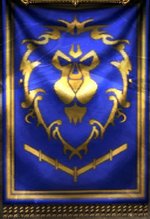
• The Kingdom of Azeroth was perhaps the most united of all the Eastern Kingdoms. The Wrynn family saw Stormwind through the best and the worst of times as the Kingdom's rulers. It can be said that the people of Stormwind are perhaps the most resilient of Humans. During the Second War they took on the full brunt of the Orcish onslaught, shifting their culture from the "fat and lazy” perception (Which Medivh states in The Last Guardian) to a vision of hardened and veteran warriors, having to live off the land and fight every day for survival. They fought stubbornly for many years until Stormwind fell to the Horde and Anduin Lothar accompanied by Khadgar and Varian had to retreat "Across the sea” to Lordaeron. It is even mentioned by Orgrim Doomhammer in his war-frenzy speech to the Horde that "these humans appear to be stubborn fighters”. This statement provoked a murmur of agreement throughout the mass of Orcs. Under the command of Anduin Lothar, the people of Stormwind had to make the transition from a life of luxury to that of becoming a borderline warrior-culture. They proved to be the most valued and experienced soldiers in the Second War. The end result? Mainly a culture that has learned to "do with out” and fight the tough battles with a warrior personality.
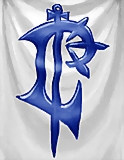
• The Kingdom of Lordaeron maintained a peaceful dominance over the northern region of the Eastern Kingdoms, the Menethil family (Especially Terenas) often acting as a medium between the bickering Kings of the region. As a nation, they valued diplomacy which ultimately kept the divided nations together for so long. It is also noted that Lordaeron was a highly spiritual nation, a large majority of the population being faithful light-worshippers. So it is only appropriate that the Order of the Silver Hand and the concept of Paladins were founded in Lordaeron under the watchful eyes of Arch-bishop Faol. With very little combat experience, the Paladins of the Silver Hand brought furious wrath down on the Orcish Horde and the soldiers of Lordaeron also held Capital City bravely and efficiently, long enough for the Alliance Army to return. They were destroyed in the Third War, betrayed by the son of Terenas Menethil. Their Kingdom was scattered to the winds. The end result? Stoic, diplomatic and faithful people, most of them seeking unrelenting vengeance against the Lich King and the Scourge.
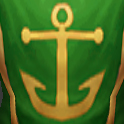
• The Nation of Kul Tiras held dominance of the sea and its extensive trade routes for generations before and even after the three wars. Under Grand Admiral Daelin Proudmoore, they delivered a decisive and devastating blow to the Orcish fleet which ultimately brought about a significant turning point in the war. In this particular battle, Daelin Proudmoore’s ruthless love of clockwork efficiency and stern attitude commanded the Kul Tiras fleet as it sailed circles around the clumbsy Orcish barges in perfect formation. They battered down the ships without mercy and even as he watched his son’s death, Daelin still continued with his duty. The end result? I won’t pretend that every Kul Tiras citizen is as cold and calculating as Daelin Proudmoore, but it does say something about the efficiency and dedication they have to their Grand Admiral. With the most experience in naval warfare they demonstrated their adept ability with the workings of a battleship. They also possessed a highly organized and structured navy (military) before the Second War, perhaps giving them the most military personality of all the Kingdoms.
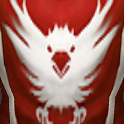
• The Kingdom of Stromgarde would often follow the example of the very tough and grizzly Thoras Trollbane. They are a highland and mountain people (as noted in Tides of Darkness) for they had become accustomed to climbing and traversing tough terrain, making them very fit and adaptable people. Their willingness to fight was demonstrated when Thoras Trollbane discovered Perenolde’s betrayal, he literally grabbed his battle axe, rallied his men and stormed the mountain passes. The Stromgarde soldiers worked in cohesive unison, blocking the paths and violently ambushing the Orcs, giving as much brutally as the ‘beasts’ themselves. They would later fall to the deception of their embittered former allies, the Alterac (Now labeled "The Syndicate”). The end result? A tough highland people who are proficient with combat on the frontlines and climbing difficult mountain peaks. They are also solid in their loyalties, doing all they can to preserve their honour and respect.
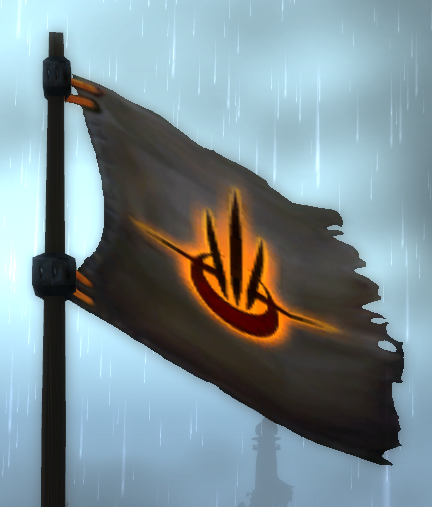
• The Kingdom of Gilneas were the least prepared to join the Alliance in the Second War, but not by choice. They were often kept ignorant by their ruler due to his own reclusive and arrogant attitudes towards the rest of the Kingdoms. He reluctantly offered troops to the Alliance which actually proved to be competent, brave and solid men under the command of Anduin Lothar. As the Second War closed, Genn Graymane pulled his people away from the Alliance and plunged his nation into another age of solitude. The people for lack of better knowledge remained safe as their Lordaeron neighbors suffered the plague. The end result? Essentially competent and proud people over all, but kept ignorant by their leader. After the Second War, most of them would be naturally curious of the outside world after having served in the Alliance Army.
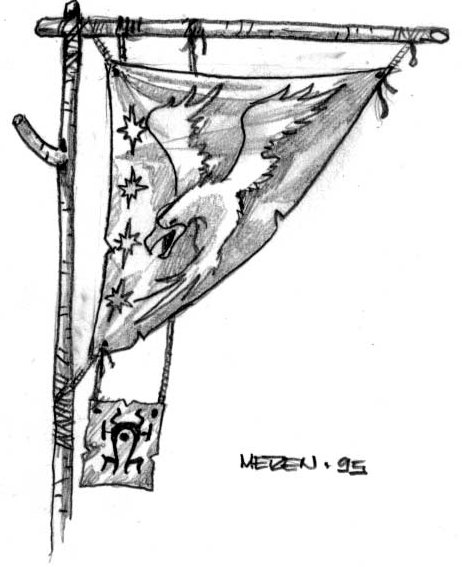
• The Kingdom of Alterac is perhaps very similar to that of Stromgarde with a major exception lying within their ruling class. Whilst the Trollbane had a history of stoic warriors, Perenolde would be seen as "greasy and spineless”, especially after Aiden betrayed the Alliance in the Second War. The army of Alterac initially followed Perenolde’s orders and allowed the Horde to pass through, unhindered (most of them kept unaware of this), it was when Thoras Trollbane confronted General Halth that the Alterac Army spurred into a frenzy and betrayed the orders of Perenolde, efficiently blocking off the pass from the Horde. Following the end of the Second War, Perenolde was banished and Alterac was (without reason or justification) crushed by the Alliance. The end result? An extremely bitter misplaced people who no longer have any friendly standing with the Alliance.

• The Nation of Dalaran was the dominant mage council of the Eastern Kingdoms, often arrogant in their control and study of magic. They conscripted all magically affluent people into their ranks thus making them a combination of all the other nations. Although they held no border disputes or quarrels with other nations, they often put pressure on any magic society outside of their own, condemning them as Hedge Wizards. They offered their support to the Alliance in the Second War and would perhaps be classified as another resilient Kingdom having been destroyed and rebuilt once before. The end result? Well most Human mages would come from Dalaran, having learned their powers in the largest sanctuary of magical knowledge in all of Azeroth. They would have lost many friends and perhaps family in the Third War and remain some of the most well-informed Humans in Azeroth. (In regards to current and past events)
Sadly, the only remaining Kingdoms are Stormwind, Kul Tiras, Gilneas and Stromgarde (barely). Dalaran is now neutral and does not strictly serve the Alliance.
So to make sense of all of this, you should choose a Kingdom that better suits your character and the region you wish to live in/originate from. Acknowledge that with the destruction of Lordaeron, most denizens found themselves in the Argent Crusade if not Stormwind. The Kingdom of Alterac currently exists as the Syndicate and boasts a large membership of extremely bitter former soldiers and civilians of the Kingdom.
What does all of this tell me?
Summarized in basic terms, this guide tells you a few main key points.
• Humans are not united, and do not have a common culture and society in relation to one another. Interactions between differing nations may be either unfriendly or friendly depending on the people involved.
• Humans are a very hardy race that understands war, sorrow, the authority of the upper class and the need for the Alliance should they have any hope for their continued survival.
• An average personality trait they all share is their hatred of Orcs, Trolls and anything that is Horde. They have seen much of their homeland ravaged by the Horde in the Second War and Humans rarely forgive Orcs. (See Battle of Theramore in Warcraft Frozen Throne, Admiral Daelin Proudmoore "I will never stop fighting your kind, death to the black bloods!”).
With a good understanding of these key points along with solid knowledge of lore through the games or novels (WoWWiki can be useful sometimes) you should be able to roleplay a convincing Human!
(Written by Daelus)








